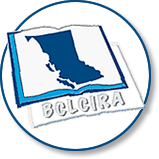Adrienne Gear: Transforming Thinking
By Rachel Griffith
As a teacher candidate in the early stages of my first practicum, I began to hear about Adrienne Gear and her Reading Power program. She seemed to be a celebrity with amazing ideas and a tailored program to get students to learn reading through comprehension strategies including making connections.
Adrienne Gear appeared to me as having a very hands-on approach to teaching reading comprehension. As a result of Reading Power lessons taught by my school advisor, the students in my practicum class would often link their fingers together when listening to a story to show they had made a connection. I attended Adrienne Gear’s Workshop on April because I felt this was an opportunity that could not be missed. I was excited to learn more of her strategies to help engage my children in the reading process. While she definitely highlighted some of the key components to Reading Power, two things stood out most from her presentation. First, you never teach a child to ride a bicycle without running alongside them and guiding them their first few times, offering tips and encouragement. In other words, guided practice is a very important part of the learning process and all too often teachers forget the importance of guiding students through their first few times practicing the new skill. We skip from modeling to independent practice without offering the time for tips and encouragement. For me, this bicycle example made me acutely aware of how to structure my units and plan teaching new skills, regardless of whether they are reading skills. Second, Adrienne lamented initially naming her program “Reading Power,” because she now feels that these skills are not reading specific, but rather are thinking skills. I agree with Gear that these skills are important to all forms of learning and should be practiced in every classroom, even if not exactly as she has recommended. This will give children a chance to be aware of how they can think about what they are reading, learning, discussing and doing and will open many doors of understanding both inside and outside of the classroom.
